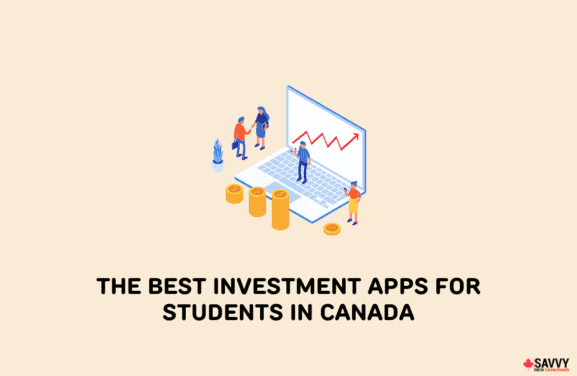Exchange-Traded Funds or ETFs are excellent assets for diversity in the portfolio of any Canadian investor.
They have lower costs than traditional mutual funds and can often be bought with zero trading commissions on platforms like Wealthsimple Trade or Questrade.
This review covers XEF and its holdings, performance, fees, comparisons to other popular ETFs, and pros and cons.
What is XEF?
XEF is an ETF from the popular iShares line of funds from Blackrock.
This iShares ETF is designed to track the benchmark MSCI EAFE Investable Market index. There is also a hedged version of XEF that trades under the ticker symbol XFH.TO.
XEF is a low-cost, long-term growth investment that provides Canadian investors with exposure to stocks from Europe, Australia, and Asia.
It has a medium risk rating and is 100% invested in individual stocks.
Key facts for XEF.TO as of August 2023 include:
- Inception date: April 10, 2013
- Number of stocks: 2,639
- Price/Earnings Ratio: 13.8x
- Price/Book Ratio: 1.64x
- Management fee: 0.20%
- MER: 0.22%
- Assets under management: $6.19 billion
- 12-month trailing yield: 2.94%
- Distribution yield: 3.72%
- Distribution frequency: Semi-Annual
- Eligible accounts: RRSP, TFSA, RRIF, TFSA, DPSP, RDSP
- Currency: CAD
XEF Holdings
XEF is a 100% stock fund with a total of 2,639 stocks from various global markets. It has a medium risk rating and trades on the Toronto Stock Exchange.
Here are the top ten holdings of XEF.TO as of August 2023:
| Ticker Symbol | Stock Name | Allocation |
| IEFA | iShares Core MSCI EAFE ETF | 2.23% |
| NESN | Nestle SA | 1.80% |
| NOVO B | Novo Nordisk Class B | 1.68% |
| ASML | ASML Holding NV | 1.46% |
| MC | LVMH | 1.30% |
| AZN | Astrazeneca PLC | 1.17% |
| NOVN | Novartis AG | 1.16% |
| SHEL | Shell PLC | 1.14% |
| ROG | Roche Holding PAR AG | 1.13% |
| 7203 | Toyota Motor Corp | 0.95% |
And here is the exposure breakdown for XEF by country:
| Country | Allocation |
| Japan | 23.65% |
| United Kingdom | 14.68% |
| France | 11.13% |
| Switzerland | 9.33% |
| Germany | 8.04% |
| Australia | 7.55% |
| Netherlands | 4.10% |
| Sweden | 3.36% |
| Denmark | 3.13% |
| Italy | 2.71% |
Given the large number of stocks that XEF holds, it is no surprise that each stock has a very minimal allocation in the fund.
Japan leads the way with 23.65% of the stocks in XEF.TO, followed by the United Kingdom with 14.68%.
Related: Best Canadian REIT ETFs.
XEF Returns and Performance
You can easily track the performance of XEF since its inception. iShares allows you to look at the NAV price and index performance on an annual and cumulative basis.
| Year | Total Return |
| 2017 | 17.69% |
| 2018 | -6.62% |
| 2019 | 16.15% |
| 2020 | 6.49% |
| 2021 | 10.05% |
| 2022 | -9.27% |
On an average annualized basis, the return from XEF.TO has been 7.89% since inception. On a cumulative basis, XEF.TO has returned 118.79%.
Of course, historical returns are not indicative of future performance for any asset.
XEF Fees
XEF.TO has a management fee of 0.20% and a management expense ratio or MER of 0.22%. This means that for every $10,000 you have invested in XEF.TO, you will pay $22.00 in annual fees.
While it isn’t the lowest that iShares offers, it is very reasonable considering it holds so many international stocks. The fees are also much lower than a traditional mutual fund.
XEF offers an incredibly diverse portfolio exposure to stocks from Asia, Europe, and Australia, without foreign exchange fees.
The MER is quite reasonable, considering the number of international stocks. It is much lower than an international stock mutual fund in Canada.
With 2,639 stocks in the fund, you will never have to worry about choosing a few specific equities to invest in.
XEF is easy to take advantage of on discount brokerages like Questrade, which offer zero-commission ETF buying.
With that being said, with a 100% stock fund, you don’t want XEF to be the only holding in your brokerage account.
XEF vs VIU
VIU is the FTSE Developed All Cap ex North American Index ETF from investing giant, Vanguard Canada.
This Vanguard Canada ETF provides exposure to emerging markets outside of North America and a total of 3,863 assets with an MER of 0.23%.
A majority of VIU is based in Europe and Asia, with a 59.0% allocation to European markets and a 40.10% allocation to Asian markets.
Learn more about it in this VIU review.
XEF vs XIC
XIC is another ETF from iShares Canada and tracks the Canadian equities market. It is the S&P/TSX Capped Composite Index ETF.
This iShares ETF was established back in 2001 and holds 227 different Canadian stocks with an MER of 0.06%.
XIC has a very low MER and provides broad sector exposure to the largest Canadian stocks on the Toronto Stock Exchange.
Learn more in this detailed XIC review.
XEF vs XAW
XAW is the iShares Core MSCI All Country World ex Canada Index ETF. It tracks nearly every major market in the world aside from Canada.
This fund is an asset allocation fund, meaning it holds a basket of other iShares ETFs. Its largest holding is IVV, the iShares Core S&P 500 ETF, with a 53.39% allocation in the fund.
It holds 6 different ETFs, which hold a total of 9,496 underlying assets. It has an MER of 0.22%, with 62.79% of the investments in the US market.
XAW is also a hedged ETF, meaning it holds both Canadian and US dollars that can act as a hedge for volatile currency fluctuations.
Learn more in this XAW ETF review.
Questrade
Questrade is a popular discount brokerage service for Canadian investors. With an intuitive mobile and desktop platform, Questrade provides zero-commission buying for ETFs.
It does charge $4.95 to sell ETFs, which is a great incentive to hold ETFs like XEF for the long term.
Questrade

Trade stocks, ETFs, options, etc.
Get $50 trade credit with $1,000 funding
Low and competitive trading fees
Top platform for advanced traders
Transfer fees waived
Wealthsimple Trade
Wealthsimple Trade is another popular discount brokerage that specifically targets young investors and millennials to begin investing.
Wealthsimple Trade offers zero-commission stock and ETF trading for Canadian assets, making it an ideal site for new investors.
Wealthsimple Trade

Trade stocks and ETFs for free
Great trading platform for beginners
$25 cash bonus when you deposit $200+
Transfer fees waived up to $150
Is XEF a Good Buy?
XEF is an excellent investment for Canadian investors who are looking for exposure to international markets without having to pay foreign exchange fees.
The XEF ETF has an adequate MER for the Canadian ETF industry at only 0.22%. This means that for every $1,000 you have invested in XEF, you pay $2.20 per year.
This iShares fund is very well-diversified, with over 2,600 stocks from various different markets across Asia, Europe, and Australia.
It offers a good opportunity for Canadian investors to invest in emerging markets outside of North America.
XEF ETF Review FAQs
Since its inception, XEF.TO has had an average annual return of 7.89%, which generally trails the average return of the benchmark S&P 500 index in the US. Still, for Canadian investors who are overexposed to Canadian and US markets, XEF.TO offers a nice way to diversify their portfolio with low MER fees.
Yes, XEF is an all-stock portfolio. It holds 2,608 different stocks from various markets around the world. Its highest allocation is to Japan and then the United Kingdom.
XEF is not a hedged ETF, so it contains all stocks and no currencies to offset fluctuations in currency value. If you are looking for a hedged version of the iShares XEF ETF, check out the iShares XFH ETF. This has the same stocks offered but also includes currencies like the JPY/CAD and the GPB/CAD.
Yes, XEF.TO pays a semi-annual distribution to its investors. XEF.TO has an annualized distribution yield of 3.72% as of August 2023. This is a fairly standard distribution yield for iShares ETFs. International stocks do not always have the same focus on dividends as North American companies. Still, XEF.TO provides a solid return, albeit on a semi-annual basis, which means twice per year.







The review twice mentions “emerging markets” but neither XEF nor VIU are emerging market ETFs.
The emerging market ETFs from Blackrock and Vanguard are XEC and VEE respectively.